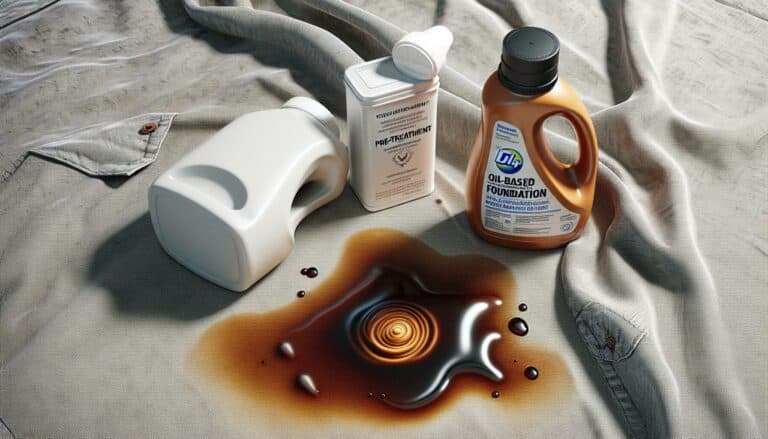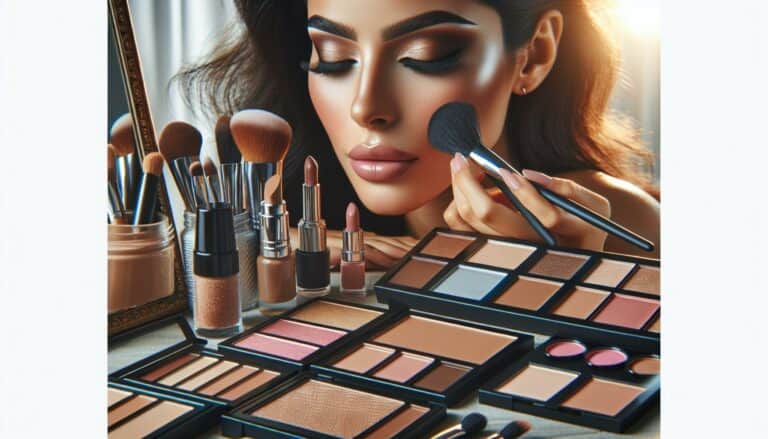5 Easy Steps to Avoid Cakey Foundation: Perfect Your Look
Understanding the Causes of Cakey Foundation
Before diving into solutions, it’s crucial to understand why your foundation might appear cakey. This unwanted effect can be due to a variety of factors, some of which might surprise you.
First and foremost, skin prep plays a significant role. Skipping moisturizer or primer can leave your skin’s texture uneven, which makes foundation cling to dry areas or settle into lines, amplifying the cakey appearance.
Another common culprit is the foundation formula itself. Not all foundations are created equal, and using the wrong type for your skin can lead to trouble. Oily skin paired with a highly emollient foundation, or dry skin with a matte, high-coverage formula, can exacerbate texture and cakeiness.
“The key to flawless foundation is not just in how you apply it, but also in selecting the right formula for your skin type and prepping your skin properly.” – Celebrity Makeup Artist
Lastly, the application technique and tools can make a big difference. Over-applying foundation or using the wrong tools can prevent a smooth, even blend, leading to a buildup of product that looks heavy and cakey.
Here’s a quick overview of the main causes:
| Cause | Explanation |
|---|---|
| Skin Prep | Skipping moisturizer or primer can create an uneven texture. |
| Foundation Formula | Using the wrong type for your skin can exacerbate texture. |
| Application Technique | Over-applying or using incorrect tools can cause buildup. |
By keeping these factors in mind, you’re on your way to identifying the root of the problem and achieving a smooth, natural foundation application.
Choosing the Right Foundation for Your Skin Type

Finding the perfect foundation for your skin type is crucial to avoid that dreaded cakey look. You might be overwhelmed by the countless options available, but understanding your skin’s needs can make the choice much simpler.
For starters, know your skin type. Is it oily, dry, combination, or normal? Each type demands a different formula for optimal results. Here’s a brief guide to help you:
| Skin Type | Recommended Foundation Type |
|---|---|
| Oily | Matte, oil-free |
| Dry | Hydrating, dewy finish |
| Combination | Satin or semi-matte |
| Normal | Any type (based on preference) |
Next, consider the foundation’s coverage level. If you’re aiming for a natural look, a sheer to medium coverage foundation is key. It lets your skin breathe and decreases the chances of caking. Use a full-coverage foundation sparingly and only where needed.
Texture is another important factor. Liquids and creams are generally best for dry to normal skin, offering hydration and a luminous finish. Powders and matte formulas are ideal for oily and combination skin types, providing control over shine and a smoother appearance.
Remember, the right foundation not only enhances your complexion but also wears comfortably throughout the day. Experiment with samples when possible and give your skin time to adjust to new formulas. This approach ensures you’ll find a foundation that doesn’t just look good but feels great on your skin too.
Prepping Your Skin for a Flawless Finish
Before diving into the world of foundation, prepping your skin is crucial to avoid that dreaded cakey look. Your canvas needs to be smooth, hydrated, and primed for whatever product comes its way. Starting with a clean base ensures that your foundation adheres properly and lasts longer.
First things first, hydration is key. Whether you’ve got oily, dry, or combination skin, a well-moisturized face prevents foundation from clinging to dry patches or sliding off oily areas. After cleansing, apply a moisturizer suited to your skin type. Give it a few minutes to absorb fully before moving on to the next step.
“A well-prepped skin is the best canvas for makeup.”
Primer is your next best friend. It fills in pores, smooths out wrinkles, and creates a barrier between your skin and makeup. Not all primers are created equal, so pick one that targets your specific concerns. For example, a mattifying primer works wonders for oily skin, while a hydrating primer is perfect for dry skin types.
Here’s a quick breakdown of how to choose your primer:
| Skin Type | Primer Suggestion |
|---|---|
| Oily | Mattifying |
| Dry | Hydrating |
| Combination | Balancing |
| Sensitive | Mineral-Based |
Lastly, let’s not forget sunscreen. Even on cloudy days, UV rays can penetrate your skin, causing damage and premature aging. Apply sunscreen after your moisturizer but before your primer. This not only protects your skin but also ensures a smooth application of foundation.
By taking the time to prep your skin properly, you’re setting the stage for a flawless, non-cakey foundation application that looks natural and feels comfortable all day long.
Applying Foundation in the Right Way
Once your skin is well-prepped, achieving that seamless foundation coverage becomes far more attainable. It’s all about technique and the tools you use. Let’s dive into the essentials of application that can help you avoid a cakey appearance.
First off, consider the tool you’re using to apply your foundation. Different tools can provide various levels of coverage and finish.
| Tool | Coverage | Finish |
|---|---|---|
| Sponge | Buildable | Natural |
| Brush | Full | Polished |
| Fingers | Light | Dewy |
Opting for a damp sponge or a stippling brush can help you achieve a more natural, airbrushed look. These tools allow for a more controlled, even distribution of product, minimizing the risk of over-application.
“The key to a natural foundation look isn’t just the product, but how you apply it.” – Makeup Industry Expert
Light Layers are your best friend when it comes to foundation. Starting with a small amount and building up only where necessary can make a significant difference. This approach not only conserves your product but also ensures that your skin’s natural texture shines through, avoiding that dreaded cakey facade.
Remember, blending is crucial. Smooth, circular motions with your tool of choice can help meld the foundation into your skin seamlessly. Also, be mindful of areas prone to creasing, such as under the eyes and around the mouth. Less is more in these regions to prevent product buildup.
Lastly, setting your foundation is an essential step, especially if you have oily skin. A light dusting of setting powder can lock your foundation in place without adding heaviness to your look. Choose a translucent powder for a more undetectable finish, and focus on areas that tend to get shiny throughout the day.
Tools and Techniques for a Cake-Free Look
Achieving a cake-free foundation look is as much about the tools you use as the techniques you apply. With the right approach, you can ensure your foundation melds seamlessly with your skin, enhancing your natural beauty without the heaviness.
The Right Tools for the Job
First, let’s talk tools. The tool you choose can make a significant difference in the finish of your foundation. Here’s a quick guide:
| Tool | Best For |
|---|---|
| Sponge | Blending and achieving a dewy finish |
| Brush | Full coverage and precise application |
| Fingers | Warming up the product for a natural finish |
Sponges are fantastic for a light, airbrushed look. The key is to use them damp to avoid product absorption and ensure a smooth, blendable application. Brushes, on the other hand, offer more coverage and are excellent for working the product into your skin, particularly in areas needing more attention. Using your fingers can be beneficial too, as the warmth helps the foundation to melt into your skin, making it look like a second skin.
Pro Tip: “Always start with less product and build up as needed. It’s easier to add than to subtract.”
Mastering the Technique
The technique is just as crucial as the tool. Begin with a small amount of foundation and apply it to the center of your face, blending outward. This method ensures you don’t end up with too much product where it’s not needed, reducing the risk of cakiness.
Bold and Smooth Moves: Use smooth, circular motions when blending with a brush or sponge. This technique helps to mimic the texture of your skin, allowing the foundation to set naturally without settling into fine lines or pores.
Lastly, remember to assess your foundation in different lights. What looks flawless in your bathroom may not look the same in natural light. Adjusting your application based on lighting can make a significant difference in achieving a cake-free look.
Conclusion
Continuing your journey toward a cake-free foundation look isn’t just about the right tools and techniques; it’s also about understanding the importance of skincare and product choice. You’ve mastered how to apply foundation without it looking heavy, so let’s dive into how your skincare routine can play a decisive role in enhancing this.
| Step | Recommended Action |
|---|---|
| 1. Cleansing | Use a gentle cleanser to remove impurities without stripping the skin of moisture. |
| 2. Moisturizing | Apply a lightweight moisturizer to help hydrate your skin. |
| 3. Priming | Choose a primer that suits your skin type to create a smooth canvas. |
Picking the right foundation is crucial. Not every foundation is suited for every skin type. Dry skin types may benefit from a hydrating liquid foundation, while oily skin types might find a matte finish more beneficial. It’s also worth considering a foundation with buildable coverage to avoid applying too much product from the start.
“The best foundation you can wear is glowing healthy skin.”
Finally, remember that the beauty world is ever-evolving, offering new products and technologies designed to help you achieve the perfect makeup look without the heaviness. Keeping an eye on innovations and adjusting your makeup routine accordingly can make a significant difference.
Your makeup routine should be as unique as you are. While following these tips can guide you toward a cake-free look, don’t be afraid to experiment and find what works best for your skin and your style.








